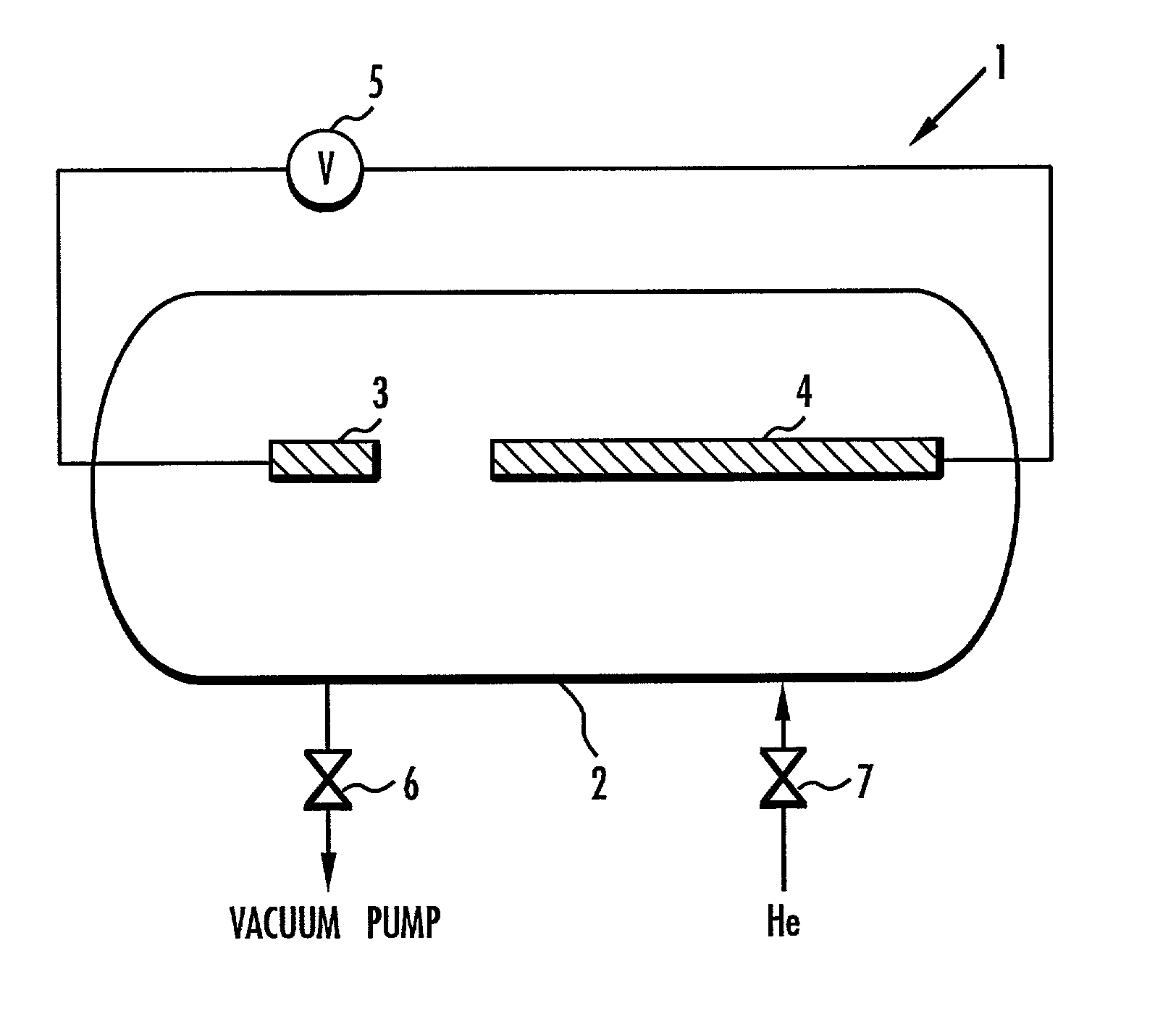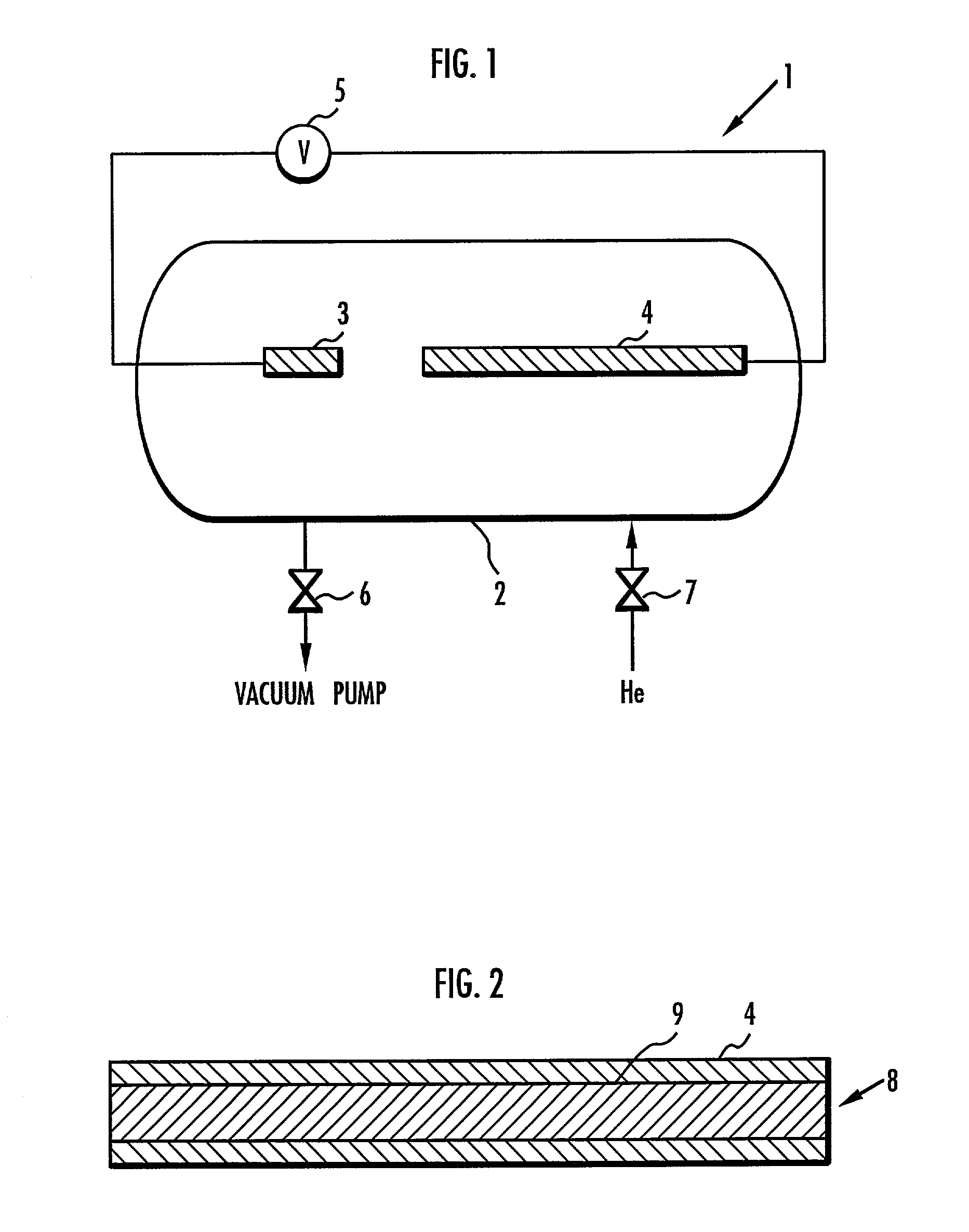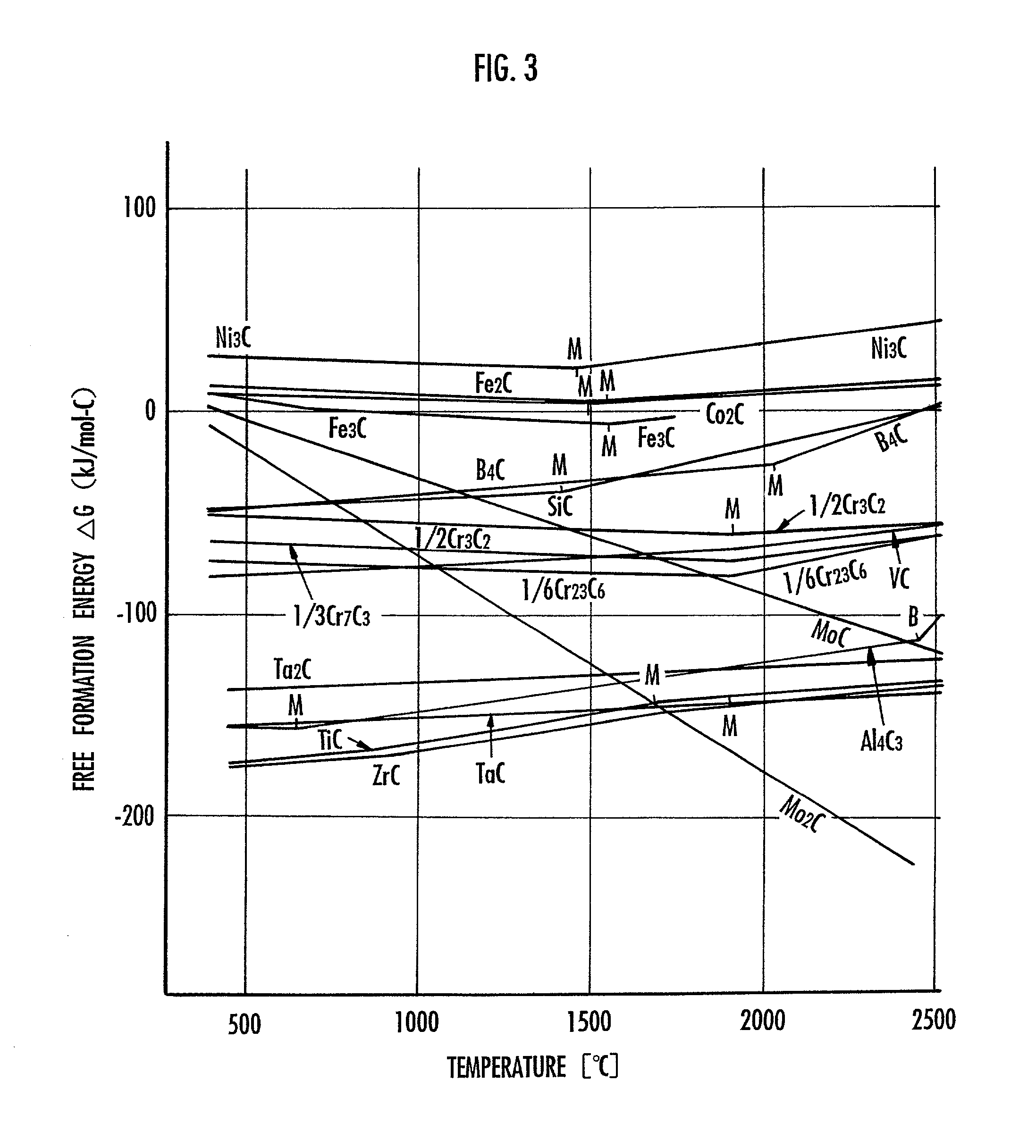Method of manufacturing carbon nanotube
- Summary
- Abstract
- Description
- Claims
- Application Information
AI Technical Summary
Benefits of technology
Problems solved by technology
Method used
Image
Examples
Embodiment Construction
:
[0044] First, a hollow cylindrical, highly pure graphite rod having an outside diameter of 6 mm, an inside diameter of 3 mm, and a length of 150 mm was prepared. Then, the hollow space in the graphite rod was filled with a mixed catalyst which has been mixed in advance, producing the positive electrode 4 shown in FIG. 1. The mixed catalyst was a mixture of powders of Ni and Y as the main catalyst, a powder of Ti as the auxiliary catalyst, and a powder of graphite. The mixed catalyst was prepared to mix the constituents at ratios of Ni:Y:Ti:C=2:2:2:94 (atom number ratios) with respect to the total amount of the positive electrode. The total weight (initial weight) of the positive electrode 4 was 7.8 g.
[0045] Then, the negative electrode 3 in the form of a solid cylindrical, highly pure graphite rod and the positive electrode 4 were installed in the arc discharging system 1 shown in FIG. 1, and then the arc discharging chamber 2 was closed. The on / off valve 6 was opened to evacuate t...
PUM
| Property | Measurement | Unit |
|---|---|---|
| Percent by mass | aaaaa | aaaaa |
| Percent by atom | aaaaa | aaaaa |
| Fraction | aaaaa | aaaaa |
Abstract
Description
Claims
Application Information
 Login to View More
Login to View More - R&D
- Intellectual Property
- Life Sciences
- Materials
- Tech Scout
- Unparalleled Data Quality
- Higher Quality Content
- 60% Fewer Hallucinations
Browse by: Latest US Patents, China's latest patents, Technical Efficacy Thesaurus, Application Domain, Technology Topic, Popular Technical Reports.
© 2025 PatSnap. All rights reserved.Legal|Privacy policy|Modern Slavery Act Transparency Statement|Sitemap|About US| Contact US: help@patsnap.com



